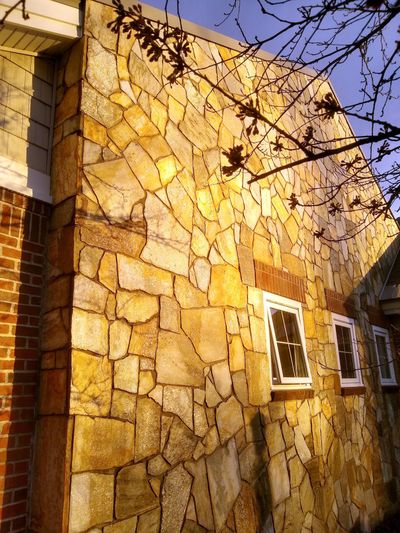Ask the Builder: There are many options for working with faux stone

Q. I’m building a very small house and love the look of natural stone. I also intend to build low garden walls that I want to look like stone. I’ve seen the artificial stone at building centers and home and garden shows. What’s your opinion of this fake stone? Will it last? Is it difficult to install? Can it be installed by someone like me with a great attitude and moderate skills? The physical labor is not an issue. I just want you to tell me the truth and not sugarcoat it. – Melissa P., Tuscon, Arizona
A. I’ve been answering questions like this for more than 25 years. I salute that great attitude about trying to do a job yourself. That inner drive is how I accumulated all my building knowledge. I made mistakes along the way but learned from each one to become a better builder. You can do the same. Embrace small failures and use them to move forward.
You’re lucky in that you want to use the stone in two ways, on your petite house and the garden walls. You can practice on a garden wall before attempting to work on the house. This way you can refine your skills on a part of the wall that’s least visible.
Let’s talk about the durability of the fake stone. Almost all artificial stones are made from poured concrete in ideal factory conditions. Concrete is the original artificial stone. You make concrete from small stones, sand (which is almost always very tiny pieces of stone), Portland cement and water. Portland cement is made from stone: limestone and shale.
The manufacturers of the product have become quite adept at creating the look of real stone using detailed forms and colorization processes. I have artificial stone fireplaces and an exterior chimney here at my home in New Hampshire. The chimney has survived brutal summer heat and bitter icy weather for more than 20 years and looks perfect.
Installing the stone is not too difficult at all. There are quite a few videos on YouTube made by manufacturers and mortar suppliers. After watching a few of these videos, you’ll gain confidence in no time.
It’s really key to understand how to mix the mortar that holds the fake stone to the vertical surfaces. I’d make sure to add hydrated lime to the mortar mix, as it increases the bonding power. I have a past column on my askthebuilder.com website that goes into detail about hydrated lime, why it’s so good and how much to use.
The biggest way to get into trouble is to try to mix too much of the bonding mortar at once. It’s best if you have a helper who can mix small batches that you use up completely every 30 minutes or less. The fresher the mortar, the better chance the stone will never fall off the wall.
You’ll have to practice at cutting the artificial stone to fit in certain situations. It’s not difficult, and, again, there are plenty of videos to watch to guide you. The biggest challenge will be as you graduate from garden walls to your small home. You need scaffolding to work your way up the walls.
There are other building products out there that look like faux stone but are not made from concrete. Some are made from high-density polyurethane. These are lightweight, and you can cover a wall surface so much faster than you can using artificial stone made from concrete.
I’d give these faux stone products a serious look because they can produce the look you want and are no doubt so much easier for work. You might discover you can save more money and do all the work with no help whatsoever.
Your biggest concern should always be time. You don’t want the project to stretch out too long. You’re not a professional, and there will be a learning curve because you’re doing something for the first time.